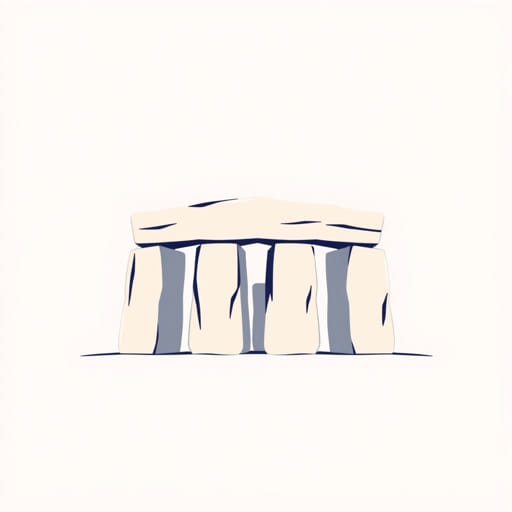What Are Megaliths Class 6
In ancient history, the term ‘megaliths’ often sparks curiosity among students, especially those in Class 6 who are just beginning to explore early human civilizations. These massive stone structures found across various parts of the world provide a glimpse into prehistoric life and the cultural practices of early societies. Megaliths are not just stones; they are markers of social, religious, and burial customs, and continue to puzzle and fascinate archaeologists today.
Understanding Megaliths
Definition of Megaliths
The word ‘megalith’ comes from the Greek words ‘mega’ meaning large and ‘lithos’ meaning stone. Therefore, megaliths are large stones that were used by ancient people to construct monuments or structures. These stones were not carved into shapes like modern monuments; instead, they were often left in their natural state and placed in specific patterns or positions.
What Makes a Structure a Megalith?
To be classified as a megalith, a structure must be:
- Made of one or more large stones
- Created during prehistoric times
- Constructed without the use of modern machinery
These structures were built using simple tools and human labor, showcasing the ingenuity of early societies despite their limited technology.
Types of Megaliths
Dolmens
Dolmens are one of the most common forms of megalithic structures. They consist of two or more vertical stones with a flat horizontal stone laid on top. These structures were often used as burial chambers, and archaeologists have discovered skeletons and grave goods inside them.
Menhirs
Menhirs are single, tall, upright stones. Sometimes they stand alone, and other times they are part of a larger group arranged in rows or circles. Menhirs may have served religious or astronomical purposes, although their exact function remains uncertain.
Cairns and Stone Circles
Cairns are piles of stones, often marking a grave or a significant location. Stone circles, such as the famous Stonehenge in England, were arranged in circular patterns and might have been used for ceremonies or to track celestial movements.
Megaliths in India
Historical Importance
India has a rich tradition of megalithic culture, particularly in the southern states like Karnataka, Kerala, Tamil Nadu, and Andhra Pradesh. These regions are dotted with dolmens, cairns, and stone circles dating back to around 1000 BCE. They often contain burial goods such as pottery, iron tools, and ornaments, indicating the belief in life after death.
Key Megalithic Sites in India
- Brahmagiri in Karnataka
- Adichanallur in Tamil Nadu
- Junapani in Maharashtra
- Hire Benakal in Karnataka
These sites give valuable insight into the early Iron Age communities and their social structures.
Purpose of Megalithic Structures
Burial Sites
One of the primary uses of megaliths was for burials. Archaeologists have discovered skeletons inside these structures, often accompanied by grave goods like tools, weapons, and ornaments. This suggests that ancient people believed in an afterlife and wanted to provide the deceased with items for the journey beyond death.
Religious and Ceremonial Use
Some megalithic sites were likely used for religious ceremonies. The alignment of stones in certain patterns indicates they might have had spiritual or astronomical significance. For example, some stone circles align with the sun during solstices, hinting at their use in tracking time or seasonal events.
Social Status Indicators
The size and complexity of megalithic monuments also suggest they were used to reflect the social status of individuals. Larger and more elaborate burial sites were likely reserved for people of higher importance in their communities, such as leaders or warriors.
Construction Techniques
Transporting the Stones
Moving large stones without machines seems like an impossible task, but ancient people managed it using logs, ropes, and sheer manpower. Some theories suggest that stones were rolled over logs or dragged on sledges, requiring coordinated effort by dozens of individuals.
Positioning the Stones
Once transported, the stones were placed upright into holes in the ground and then filled in to keep them standing. Horizontal stones, like those on dolmens, were likely lifted using ramps or inclined planes, showcasing advanced planning and teamwork.
Archaeological Significance
Understanding Ancient Culture
Megaliths serve as valuable sources of historical information. They offer clues about burial practices, spiritual beliefs, social hierarchy, and daily life of prehistoric communities. The presence of iron tools and pottery also gives insights into the technological capabilities of the time.
Dating Megaliths
Through methods such as carbon dating of organic materials found near the stones, archaeologists can estimate the age of megalithic structures. Most Indian megaliths date back to the Iron Age, though some may be even older.
Megaliths in the Global Context
Not Just in India
Megaliths are found all over the world. In addition to India, notable sites include:
- Stonehenge in the United Kingdom
- Göbekli Tepe in Turkey
- Newgrange in Ireland
- Carnac Stones in France
This widespread phenomenon shows that despite being separated by geography and culture, early humans shared a common desire to build lasting monuments.
Why Learn About Megaliths in Class 6?
Building Historical Awareness
Learning about megaliths introduces young students to the idea that history isn’t just about kings and wars, but also about how ordinary people lived, believed, and created. It helps develop a broader understanding of ancient civilizations and their achievements.
Critical Thinking and Observation
Studying megaliths encourages observation, questioning, and critical thinking. Why were these structures built? How did ancient people manage to construct them? These questions help students engage with history more actively.
Megaliths are more than just large stones; they are silent witnesses to the life and beliefs of ancient humans. From burial customs to spiritual practices, these monuments provide a rich field of study for archaeologists and historians alike. For Class 6 students, understanding what megaliths are and why they matter lays the foundation for exploring the broader journey of human civilization. As they dig into the past, they learn not only about ancient stones but about the people who placed them there with purpose and meaning.
